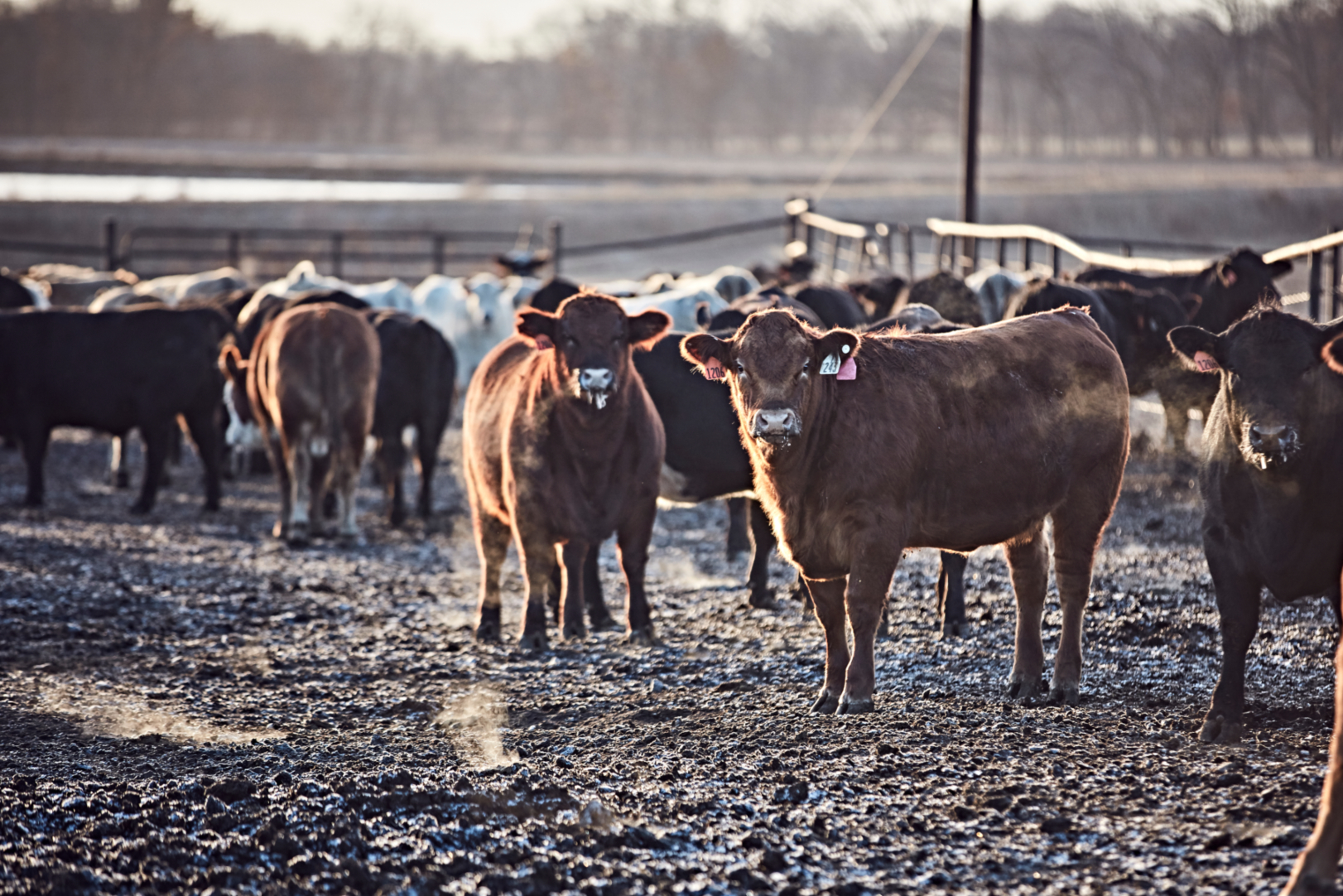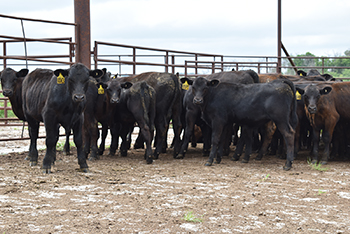Bovine respiratory disease is frustrating and costly, and the causes can be extremely hard to understand. Taking time to learn about the pathogens behind BRD can improve our management protocols, and ultimately keep calves healthy.
Mannheimia haemolytica, Pasteurella multocida, Histophilus somni and Mycoplasma bovis are the four main pathogens that cause BRD, either together or separately. Each pathogen exhibits slightly different clinical signs—often at different times.
“Understanding these four BRD-causing pathogens and how they affect cattle gives producers the resources they need to best protect their herd,” said Nathan Meyer, PhD, DVM, Boehringer Ingelheim.
The four BRD-causing pathogens
- Mannheimia haemolytica is the leading BRD-causing pathogen concern because of its prevalence and severity.
- M. haemolytica produces leukotoxins, which damage and destroy white blood cells, leading to severe lung damage.
- “Cattle with an M. haemolytica infection can go from seemingly healthy to deceased within a day’s time,” cautioned Dr. Meyer. Because cattle have such a low ratio of lung volume to body size, any lung damage is detrimental to the animal’s overall health and performance.
- Signs to look for include coughing, labored breathing, nasal discharge, loss of appetite, fever and/or depression. The classic components of an early case include a combination of depression and fever (104 to 106 degrees Fahrenheit), without any signs attributable to other body systems.
“ Mannheimia is not only the most predominant and concerning of the four bacterial causes of BRD, but it can also lead to other problems,” Meyer said. “If you have a Mannheimia infection, it’s not uncommon for P. multocida, H. somni or M. bovis to follow.”
2. Pasteurella multocida is thought to be an important cause of respiratory disease among feedlot cattle, but it causes less severe cases than M. haemolytica .
- Like M. haemolytica, infected animals may exhibit nasal discharge, loss of appetite, fever, depression and rapid, shallow breathing.
- “We also tend to see more bronchopneumonia with Pasteurella,” added Dr. Meyer. “Internally, the lungs will take on a dark appearance and become consolidated, firm and stiff, which adversely impacts the animal’s lung elasticity.”
3. Histophilus somninot only causes BRD, but it can also infect several other organs and lead to multiple other life-threatening diseases in cattle.
- “H. somnican still affect the respiratory system and cause pneumonia and severe bronchopneumonia, but it is different because of its multisystem, multi-organ involvement—it can impact the heart and brain,” Dr. Meyer said.
- H. somnican lead to a variety of neurological, cardiac and respiratory conditions, such as septicemia (blood poisoning), thrombotic meningoencephalitis (or TME, a potentially fatal neurological disease of cattle), myocarditis (inflammation of the heart), tenosynovitis (inflammation of the protective sheath surrounding tendons) and polysynovitis (inflammation of multiple joints).
- Cattle with the neurological form of H. somni may show signs of muscle weakness or paralysis, blindness and seizures. But occasionally, infected animals die prior to observation of any clinical signs.
- “Since neurological and cardiac conditions caused by H. somni progress rapidly, we recommend monitoring cattle for signs of respiratory disease, like high fevers, labored breathing, coughing or reduced feed intake,” Dr. Meyer said.
- “H. somniis more prevalent in northern climates and has been thought of as a northern bacterium,” Dr. Meyer said. “But in the early 2000s, it started appearing more in the Midwest and in the southern Plains states, where there are large concentrations of feedlots.”
4. Mycoplasma bovisis a unique BRD-causing pathogen because of its ability to affect an animal’s joints and/or ears.
- The bacterium is widely distributed throughout feedlot cattle populations and affects most calves before weaning. But if that doesn’t happen, they usually become rapidly colonized upon mingling with other calves, following arrival at the feedyard.
- For some, an M. bovisinfection in the lung can spread to other parts of the body, including the joints. Commonly affected joints include the stifle (knee), carpus (radial, intermediate, ulnar and accessory carpal bones) and fetlock (metacarpal/metatarsal hinge joint that allows extension of the leg), with the infection most often occurring in the tendon sheaths and surrounding tissue, not in the joint space itself. This results in swollen, painful joints, and often shows up several weeks after a bout of BRD.
- Another possible sign of M. bovis in calves is a droopy, or “tipped,” ear. While it’s more common in dairy calves following a Mycoplasmainfection from milk, it can also show up in feedlot calves, and indicates the infection has settled into the inner ear.
- Mycoplasma often appears at a much slower rate than most of the other BRD pathogens. In most cases, the bacterial entry into the lungs proceeds more moderately, taking several weeks to cause enough damage to produce clinical signs, like increased respiratory rate, cough and fever in the calf.
- Another key reason M. bovis is an outlier compared to the other pathogens is that it doesn’t have a cell wall. This becomes important when producers need to treat the bacteria, as certain classes of antibiotics are not effective against Mycoplasma. This is because those types of antibiotics—cephalosporins, penicillins and beta-lactams—target the cell wall, which isn’t present with Mycoplasma. The infection would continue to progress if those antibiotics are used.
Testing and diagnosis determine treatment
“Producers do their best to monitor the various signs of BRD to protect their animals, but we often don’t know which pathogen is involved right away,” Dr. Meyer pointed out. “That’s where diagnostic tools can come in.”
Diagnostic testing can pinpoint the cause of respiratory infections. A pathologist at a diagnostic lab will work with your veterinarian to more closely examine the pathogens present. This can be done antemortem by obtaining nasal swabs from the calf, or postmortem through a necropsy evaluation.
“A stethoscope and an ultrasound are great tools for detecting subclinical BRD cases, when producers can’t see visible signs, or to evaluate the success of BRD management changes,” said Dr. Meyer. “Many veterinarians are trained in how to perform an ultrasound on lungs and can help identify these BRD cases earlier.”
Management and control
Once a calf has been diagnosed, using the appropriate treatment is crucial. “To optimize treatment success, look for a fast-acting, broad-spectrum antibiotic that provides coverage against all four of these bacteria,” Dr. Meyer said. “A treatment that reaches the lungs quickly will minimize long-term lung damage.”
Work with your veterinarian to put together a treatment protocol that works for your herd. They can help you establish and update your protocols over time.




